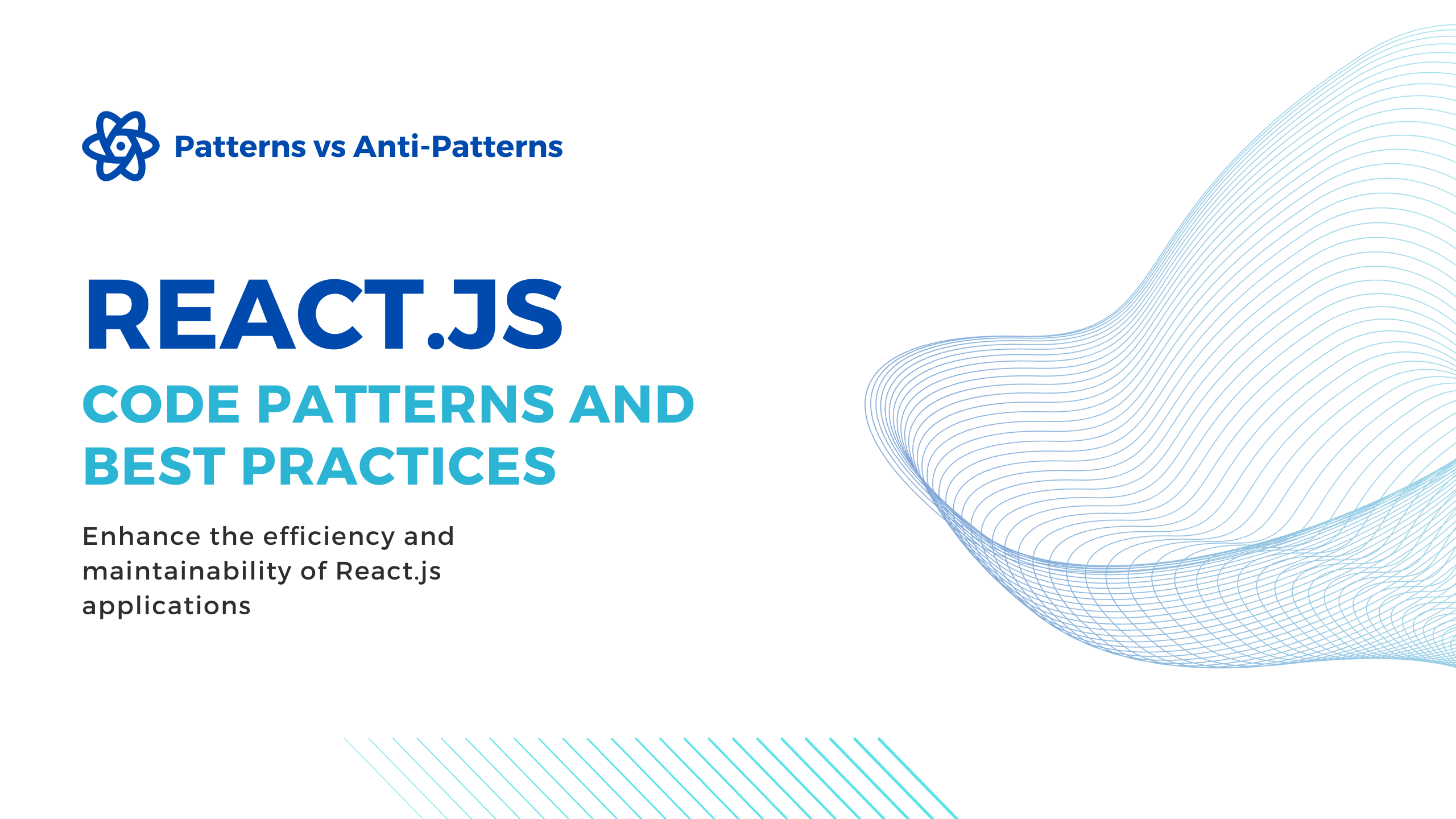As a web developer, you’re probably familiar with the power and versatility of React.js. This popular JavaScript library has revolutionized the way we build user interfaces, making it easier and more efficient to create dynamic and interactive web applications.
But as with any powerful tool, it’s important to use React.js in the right way to maximize its potential and ensure that your code is clean, maintainable, and performant.
According to recent statistics, React.js has a significant market share among JavaScript frameworks. It is the preferred choice for many developers, with companies like Facebook, Airbnb, and Twitter relying on React for their web applications. The popularity of React.js can be attributed to its simplicity, performance optimizations, and extensive ecosystem of libraries and tools.
Folder Structure: Organizing Your Project
One of the first steps in building a scalable React application is establishing a well-organized folder structure. A feature-based folder structure is recommended, where components are grouped based on their functionality rather than file types. This approach simplifies the management of related files, such as JavaScript and CSS files, making it easier to locate and update components.
- src
- components
- Feature1
- Feature1Component1.js
- Feature1Component1.css
- Feature2
- Feature2Component1.js
- Feature2Component1.css
- utils
- utility1.js
- utility2.js
- services
- service1.js
- service2.js
In the above example, the src directory contains subdirectories for components, utilities, and services. Components are organized in folders based on features, making it easy to navigate and manage related files.
This folder structure promotes modularity and reusability, allowing developers to scale their applications without sacrificing maintainability.
Component Design: Presentational vs. Container Components
A crucial concept in React.js development is the distinction between presentational components and container components. Presentational components focus on rendering UI elements and receiving data through props. They are responsible for displaying information and have minimal or no awareness of the application’s state or logic.
On the other hand, container components handle tasks such as data fetching, state management, and business logic. They encapsulate the logic required to fetch data from external sources, manage state changes, and pass data down to presentational components through props.
This separation of concerns promotes code organization, reusability, and maintainability.
// Presentational Component
const UserProfile = ({ name, bio, profilePicture }) => {
return (
<div>
<img src={profilePicture} alt="Profile" />
<h1>{name}</h1>
<p>{bio}</p>
</div>
);
};
// Container Component
const UserProfileContainer = () => {
const [userData, setUserData] = useState({});
useEffect(() => {
// Fetch user data from API
const fetchData = async () => {
const response = await fetchUserData();
setUserData(response);
};
fetchData();
}, []);
return (
<UserProfile
name={userData.name}
bio={userData.bio}
profilePicture={userData.profilePicture}
/>
);
};
In the above example, the UserProfile component is a presentational component responsible for rendering the user’s profile information. The UserProfileContainer component is a container component that fetches the user data from an API and passes it down to the presentational component.
This separation allows for better code organization and testability. Presentational components can be reused across different container components, promoting code reusability. Container components can focus on handling data and logic, while presentational components can focus on rendering UI elements.
Breaking Down Components: Keep Them Small and Focused
As your React application grows, it’s important to keep your components focused and small. Large and complex components can become difficult to understand, maintain, and test. By breaking down components into smaller, more manageable pieces, you can improve code readability and reusability.
For example, let’s say you have a UserProfile component that has multiple sections such as profile picture, name, bio, and contact information.
Instead of having a single monolithic component, you can break it down into smaller components like ProfilePicture, UserName, UserBio, and ContactInfo. Each of these smaller components can focus on rendering a specific section of the user profile, making them easier to understand and reuse.
const UserProfile = ({ profilePicture, name, bio, contactInfo }) => {
return (
<div>
<ProfilePicture image={profilePicture} />
<UserName name={name} />
<UserBio bio={bio} />
<ContactInfo contact={contactInfo} />
</div>
);
};
By breaking down components, you can improve code modularity, maintainability, and testability.
Smaller components are more focused and easier to reason about, making it simpler to update and maintain your React application.
Naming Conventions: Components, Props, and State Variables
Naming conventions play a vital role in writing clean and maintainable code. When naming components, props, and state variables in React, it’s important to follow best practices to enhance code readability and understanding.
For components, it is recommended to use PascalCase, where each word starts with a capital letter. This convention helps distinguish components from regular HTML elements and other variables in your codebase.
import React from 'react';
const MyComponent = () => {
// Component logic here
};
export default MyComponent;
When naming variables and functions, camelCase is commonly used. This convention involves starting with a lowercase letter and capitalizing each subsequent word.
const myVariable = 'Hello, world!';
const myFunction = () => {
// Function logic here
};
For constants, it is common to use uppercase letters and underscores to separate words. This convention makes constants stand out in your codebase and helps differentiate them from variables.
const API_URL = 'https://api.example.com'; const MAX_VALUE = 100;
By following consistent naming conventions, you can make your code more readable and maintainable.
It also helps other developers understand your code and reduces the likelihood of naming conflicts.
Array Mapping
When working with arrays in React components, mapping over the array can be a powerful technique to avoid code repetition and keep your code DRY (Don’t Repeat Yourself). Array mapping allows you to iterate over an array and generate dynamic content based on each item.
For example, let’s say you have an array of products and you want to render a list of product cards. Instead of manually writing the JSX for each product card, you can use array mapping to generate the cards dynamically.
const products = [
{ id: 1, name: 'Product 1', price: 10 },
{ id: 2, name: 'Product 2', price: 20 },
{ id: 3, name: 'Product 3', price: 30 },
];
const ProductList = () => {
return (
<div>
{products.map((product) => (
<ProductCard key={product.id} product={product} />
))}
</div>
);
};
In the above example, the ProductList component uses array mapping to iterate over the products array and generate a ProductCard component for each item. By dynamically rendering the product cards, you can avoid repetitive code and keep your components clean and maintainable.
Array mapping is not limited to rendering lists. It can be used in various scenarios, such as generating dynamic forms with multiple input fields or rendering content based on specific conditions.
It is a powerful technique in React that promotes code reusability and maintainability.
Conditional Rendering
In many React applications, there are situations where you need to render content based on certain conditions. Conditional rendering allows you to selectively render components, elements, or text based on the values of variables or states.
For example, let’s say you have a user authentication feature in your application. You can use conditional rendering to display different content depending on whether the user is logged in or logged out.
const UserGreeting = () => {
return <h1>Welcome back!</h1>;
};
const GuestGreeting = () => {
return <h1>Please sign up.</h1>;
};
const Greeting = ({ isLoggedIn }) => {
if (isLoggedIn) {
return <UserGreeting />;
} else {
return <GuestGreeting />;
}
};
In the above example, the Greeting component receives a prop isLoggedIn that determines whether the user is logged in or not. Based on the value of isLoggedIn, the component conditionally renders either the UserGreeting or GuestGreeting component.
Conditional rendering can also be achieved using the ternary operator or logical operators like && and ||. It provides a flexible way to display content based on different conditions and enhances the user experience of your React application.
Render Props: Sharing Code Between React Components
Render props is a powerful pattern in React that allows you to share code between components. It involves passing a function as a prop to a component, which that component can then invoke and use to render its content.
The render props pattern is useful when you want to provide a component with some functionality but leave the rendering of that functionality up to the consuming component.
const MouseTracker = ({ render }) => {
const [position, setPosition] = useState({ x: 0, y: 0 });
const handleMouseMove = (event) => {
setPosition({ x: event.clientX, y: event.clientY });
};
return <div onMouseMove={handleMouseMove}>{render(position)}</div>;
};
const DisplayMousePosition = () => {
return (
<MouseTracker
render={({ x, y }) => (
<div>
Mouse position: {x}, {y}
</div>
)}
/>
);
};
In the above example, the MouseTracker component takes a render prop, which is a function that receives the current mouse position. The MouseTracker component handles the mouse movement and updates the position state, while the rendering of the position is left up to the consuming component DisplayMousePosition.
The render props pattern allows for greater flexibility and code reusability. It enables components to encapsulate complex behaviors while leaving the rendering up to the consuming component. This pattern is commonly used in libraries like React Router and Formik to provide powerful functionality to consuming components.
Compound Components: Creating Components that Work Together
Compound components are a pattern in React that allows you to create components that work together as a group. This pattern enables the composition of components and gives users the flexibility to customize and control the rendering of multiple related components.
With compound components, you can define a parent component that encapsulates the behavior and state of its child components. This allows you to control the interaction and rendering of the child components while providing a consistent API to your users.
const List = ({ children }) => {
return <ul>{children}</ul>;
};
const ListItem = ({ children }) => {
return <li>{children}</li>;
};
List.Item = ListItem;
In the above example, the List component is a parent component that renders an unordered list. The ListItem component is a child component that renders a list item. By assigning the ListItem component as a property of the List component, users can easily create a list structure by nesting ListItem components inside the List component.
<List> <List.Item>Item 1</List.Item> <List.Item>Item 2</List.Item> <List.Item>Item 3</List.Item> </List>
By using compound components, you can create reusable and flexible component structures. It allows for better code organization, encapsulation of behavior, and customization options for the users of your components.
React Hooks: Simplifying State and Lifecycle Management
React Hooks is a feature introduced in React 16.8 that simplifies state and lifecycle management in functional components. Hooks provide a new way to write reusable logic and share stateful logic between components without the need for class components or higher-order components.
To use hooks, you can import them from the React library and use them directly in your functional components. Some of the commonly used hooks include useState, useEffect, and useContext.
import React, { useState, useEffect } from 'react';
const Counter = () => {
const [count, setCount] = useState(0);
useEffect(() => {
// Update the document title with the current count
document.title = `Count: ${count}`;
}, [count]);
return (
<div>
<p>Count: {count}</p>
<button onClick={() => setCount(count + 1)}>Increment</button>
</div>
);
};
In the above example, the useState hook is used to create a state variable count and a function setCount to update its value. The useEffect hook is used to perform side effects, such as updating the document title when the count value changes.
Hooks provides a more concise and intuitive way to manage state and lifecycle in functional components. They eliminate the need for class components and simplify the sharing of stateful logic between components.
Higher-Order Components: Reusing Component Logic
Higher-order components (HOCs) are a pattern in React that allows you to reuse component logic. HOCs are functions that take a component as input and return a new component with additional functionality.
const withLogging = (WrappedComponent) => {
return (props) => {
useEffect(() => {
console.log(`Component ${WrappedComponent.name} mounted`);
return () => {
console.log(`Component ${WrappedComponent.name} unmounted`);
};
}, []);
return <WrappedComponent {...props} />;
};
};
In the above example, the withLogging function is a HOC that takes a component (WrappedComponent) as input and returns a new component. The returned component logs a message to the console when it mounts and unmounts.
To use the HOC, you can wrap your original component with the withLogging function, creating a new component with the added logging functionality.
const MyComponent = (props) => {
return <div>My Component</div>;
};
const EnhancedComponent = withLogging(MyComponent);
HOCs provide a way to enhance components with additional functionality without modifying their original implementation. They promote code reuse and modularity, allowing you to extract and share common logic across multiple components.
Stability and API Design: Balancing Change and Compatibility
React places a high value on API stability and compatibility. As a widely adopted framework used by numerous companies and developers, React is committed to maintaining backward compatibility and minimizing breaking changes to public APIs.
Deprecations are introduced with clear migration paths and deprecation warnings to help developers transition smoothly. React closely collaborates with users outside of Facebook and provides guidance and support for popular open-source projects to ensure a smooth transition for developers.
// Before Deprecation
class LegacyComponent extends React.Component {
componentWillMount() {
console.log("Legacy Component will mount");
// Your existing logic here
}
render() {
return <div>Legacy Component</div>;
}
}
// After Deprecation
class LegacyComponent extends React.Component {
componentDidMount() {
console.warn(
"Warning: componentWillMount is deprecated. Use componentDidMount instead."
);
console.log("Legacy Component did mount");
// Your updated logic here
}
render() {
return <div>Legacy Component</div>;
}
}In this example, the componentWillMount lifecycle method is deprecated, and developers are encouraged to use componentDidMount instead. The warning message serves as a clear indication for developers to update their code.
React’s commitment to stability is reflected in how it handles deprecations. Deprecations are introduced with clear warnings, ensuring that developers are aware of the changes and providing them with a straightforward migration path.
Please note that this is a simplified example, and in real-world scenarios, React provides comprehensive documentation and communication about deprecated features, ensuring a smooth transition for developers.
Interoperability: Working Well with Existing Systems
Interoperability is a key consideration in React’s design philosophy. React is designed to work well with existing systems, allowing for gradual adoption and integration with other UI libraries and frameworks.
<!DOCTYPE html>
<html lang="en">
<head>
<meta charset="UTF-8">
<title>Existing Web App</title>
<!-- jQuery inclusion -->
<script src="https://code.jquery.com/jquery-3.6.0.min.js"></script>
</head>
<body>
<div id="app-container">
<!-- Existing content rendered with jQuery -->
<h1>Welcome to Existing App!</h1>
<button id="updateButton">Update Content</button>
</div>
<!-- React inclusion -->
<script src="https://unpkg.com/react@17/umd/react.production.min.js"></script>
<script src="https://unpkg.com/react-dom@17/umd/react-dom.production.min.js"></script>
<!-- Your React component script -->
<script src="path/to/your/react-component.js"></script>
</body>
</html>React Component Script (react-component.js):
// Your React component
class ReactApp extends React.Component {
constructor(props) {
super(props);
this.state = {
updatedContent: "React is seamlessly integrated!",
};
}
render() {
return (
<div>
<h1>{this.state.updatedContent}</h1>
<button onClick={this.handleUpdate}>Update Content with React</button>
</div>
);
}
handleUpdate = () => {
// Update content using jQuery alongside React
$("#app-container h1").text("Content Updated with jQuery!");
// Update React state
this.setState({
updatedContent: "React and jQuery Coexisting!",
});
};
}
// Mount React component to the existing container
ReactDOM.render(<ReactApp />, document.getElementById("app-container"));In this example, React is seamlessly integrated into an existing web application that utilizes jQuery. The React component coexists with the current setup, demonstrating React’s interoperability by updating content using jQuery alongside React. The React component is mounted into the existing container, allowing for gradual adoption and integration.
React’s interoperability is demonstrated by its ability to work with mutable models and its support for wrapping imperative UI into declarative components. This flexibility enables developers to incrementally introduce React into their codebases without the need for a complete rewrite.
At Facebook, React coexists with other UI libraries and frameworks, such as XHP and internal UI libraries. React’s interoperability ensures that teams can start using React for specific features or components without disrupting existing codebases.
Scheduling and Performance: React’s Approach to Rendering
One of the fundamental principles of React’s design is its approach to rendering and scheduling updates. React takes a “pull” approach to rendering, where components return a description of what needs to be rendered, and React determines when and how to apply the changes to the UI tree.
React’s scheduling algorithm allows it to delay rendering and optimize performance by prioritizing work based on importance. React can delay rendering of offscreen components, batch updates to avoid dropping frames, and prioritize user interactions over background tasks.
While React’s current implementation walks the component tree recursively and calls render functions during a single tick, it has the potential to introduce further optimizations in the future. React may explore delaying some updates to avoid dropping frames, resulting in a smoother user experience.
// React component for a list of posts
class SmartPostList extends React.Component {
constructor(props) {
super(props);
this.state = {
posts: Array.from({ length: 1000 }, (_, index) => ({ id: index, content: `Post ${index + 1}` })),
};
this.containerRef = React.createRef();
}
componentDidMount() {
// Attach scroll event listener to the container
this.containerRef.current.addEventListener('scroll', this.handleScroll);
}
componentWillUnmount() {
// Remove the scroll event listener on component unmount
this.containerRef.current.removeEventListener('scroll', this.handleScroll);
}
render() {
return (
<div ref={this.containerRef} style={{ height: '400px', overflowY: 'auto', border: '1px solid #ccc' }}>
{this.state.posts.map(post => (
<div key={post.id} style={{ padding: '10px', borderBottom: '1px solid #eee' }}>
{post.content}
</div>
))}
</div>
);
}
handleScroll = () => {
// Simulate a smart rendering approach by checking which posts are in the viewport
const container = this.containerRef.current;
const containerRect = container.getBoundingClientRect();
const visiblePosts = this.state.posts.filter(post => {
const postElement = document.getElementById(`post-${post.id}`);
const postRect = postElement.getBoundingClientRect();
return postRect.top >= containerRect.top && postRect.bottom <= containerRect.bottom;
});
// Update state to render only the visible posts
this.setState({ visiblePosts });
};
}
// Render the SmartPostList component
ReactDOM.render(<SmartPostList />, document.getElementById('root'));
In this example, we create a SmartPostList component that renders a large list of posts. The component dynamically updates the rendered posts based on the scroll position, utilizing React’s scheduling to optimize performance by rendering only the posts visible in the viewport. This demonstrates how React’s intelligent rendering approach improves the efficiency of web applications.
React’s control over scheduling and rendering enables it to optimize performance and provide a responsive user interface. By leveraging React’s scheduling capabilities, developers can ensure that their applications are efficient and performant.
Conclusion
The React community is vibrant and active, with a wealth of tutorials, articles, and open-source projects available for developers to learn from and contribute to. Online forums and communities provide avenues for developers to seek help, share knowledge, and collaborate on React-related topics.
In conclusion, React.js offers a powerful and flexible framework for building modern web applications. By following best practices and design patterns, developers can ensure that their React applications are maintainable, scalable, and performant. With a strong focus on composition, code organization, and flexibility, React empowers developers to create high-quality user interfaces and deliver exceptional user experiences.
Remember, mastering React.js code patterns and best practices takes time and practice. As you gain more experience and work on different projects, you’ll continue to refine your coding skills and develop your own set of preferred patterns.
Stay curious, keep learning, and always strive to improve your code by adopting industry-standard best practices.
Happy coding!






